Aside from timetabled breaks like recess and lunch, just how much time do your students spend moving? And I don’t mean twisting, wriggling or fidgeting, but participating in conscious and intentional movement? Odds are that unless you are already making a concerted effort to incorporate movement breaks into your regular teaching and learning activities, your students might be sitting “still” for the majority of their school week.
The Benefits of Movement in the Classroom
There aren’t many arguments against the value of movement when it comes to learning. Brain science tells us that it’s pretty clear.
Physical movement makes it:
- easier for our brain to maintain focus
- helps us to integrate learning across both of our brain’s hemispheres
- helps to enter information into our memories
- reduces chances of feeling overwhelmed or overloaded.
(Amber Lamprecht, Literacy and Language Centre).

Yes, the days are short and the curriculum is crowded. But at the heart of those days (and the reason why you work so hard to teach #allofthethings) are your students. And if taking a two-minute movement break every 30-60 minutes is going to make it easier for them to focus, to build cohesion as a group and to learn… well, that seems like a pretty good reason to give time to regular movement breaks.
Not only that but timing mini-movement breaks in a strategic way can also help to increase your students’ concentration spans.
Managing Sensory Breaks
Before you read these ideas and think “oh, my class is too old for this kind of thing” or “my students would never take this kind of thing seriously”, think again!
Having worked as a high school teacher, I can assure you that once you make these kinds of physical activities a regular part of your students’ classroom experiences, they will most likely LOVE them! Even 16-year-olds learn to shake off “too cool” for a fun brain break.

It’s true that managing 30 kids during a physical activity in limited space, or even in a large, open space, can be hard, but it just takes practice. Soon enough you’ll figure out the best ways for you to give instructions, get their attention, and bring their focus back after a movement activity.
Simple group management techniques can make all the difference when it comes to managing practical activities.
Here are some ideas:
- have a familiar attention grabbing phrases or signals
- count in an activity “3, 2, 1, go!”
- count out an activity “3, 2, 1, stop!”
- call “freeze!”
- use a timer with an alarm
- use a whistle or a bell.
So, before deciding for them, why not give it a shot?
Movement Break Ideas
Ocean Movement Cards
Ditch those sight words flashcards and get those bodies moving! These ocean-themed movement flashcards are such a quick and fun activity.
- Download, print and laminate the 12 different movement cards.
- Ask students to find their own space in the room.
- Tell students that you are going to show them a card with an ocean animal movement for them to act out.
- Remind students to listen carefully for the instruction to “go” and to “freeze” in between each card.
Speed Fossicking
If you have access to a suitable outdoor area, give your students 60-seconds to find as many of a certain object as they can. For example, they could find as many whole fallen leaves as possible, or round stones, or twigs that are bigger than 5cm as possible. At the end of the 60-seconds, give students just 5-10 seconds (whichever is appropriate) to return their findings to where you are.
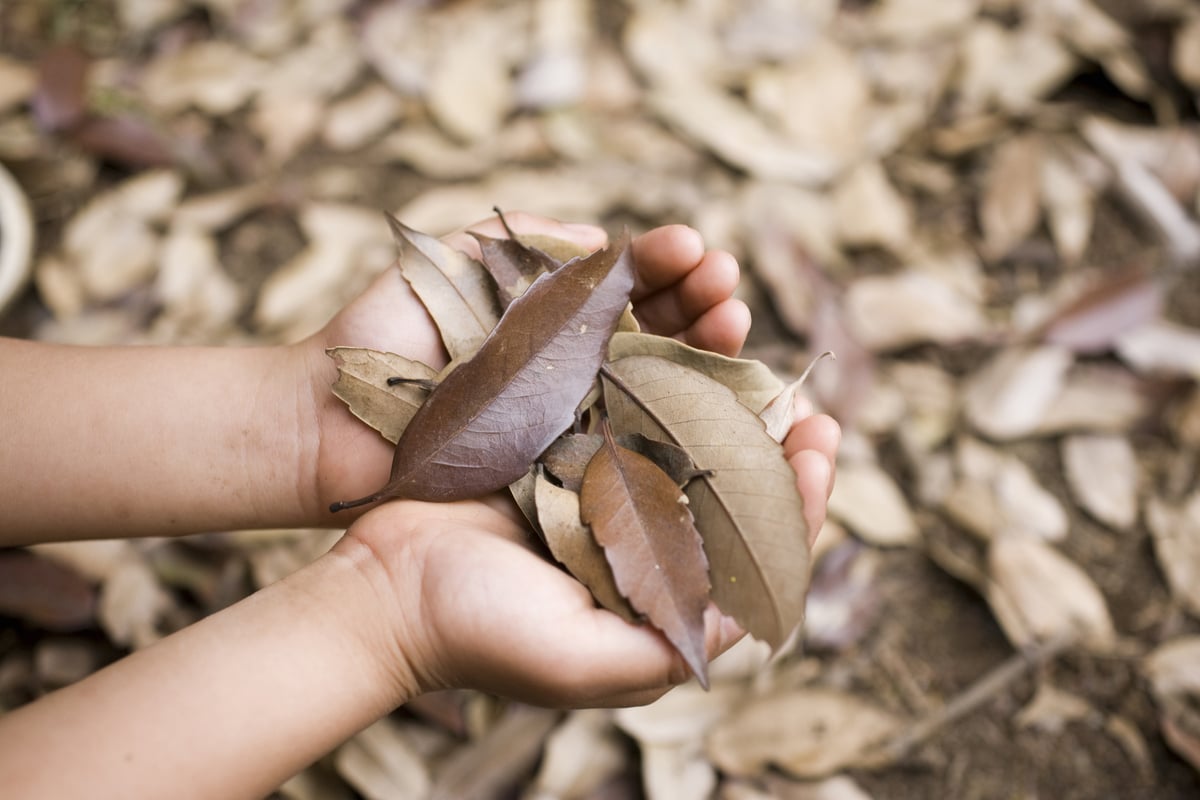
- Set clear boundaries for where students can fossick.
- Set a timer for 60 seconds.
- Use a loud whistle or bell to signal the end of fossicking time and the beginning of their speedy return.
- Use the same whistle or bell to signal that their speedy return time is up.
- Have students count the number of objects they found to determine a winner. Or keep a whole class tally and try to beat it again another time.
Brain Break Games
If you haven’t already seen these awesome Brain Break Activity Cards, you’re going to want to add them to your stash!
With heaps of fun and familiar activities, these cards can be used in a movement break “Lucky Dip” basket, on a spinner, or in any way you’d like!
Mini-Fitness and Mini-Yoga
Similar to the Brain Break Activity Cards, these Fitness Exercise Cards and Yoga Poses for Kids Posters are a great way to make sure you never run out of mini-movement break ideas.
Take a look at how Holly used these cards to create two of many awesome Giant Dice Games!
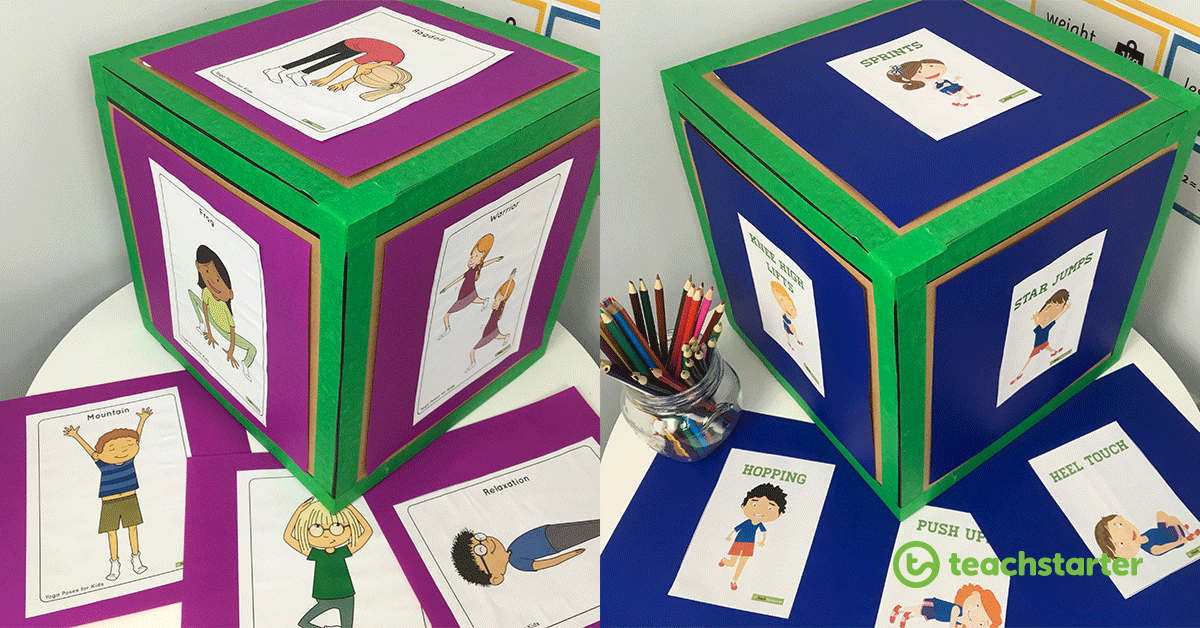
Drama Games
Don’t be scared by the “D” word in this sub-heading… Drama games and activities are often very similar (if not identical) to group games that you might be familiar with already!
Check out these two blog posts for excellent activity ideas complete with instructions.
Even though these posts are grouped by year levels, all of the games and activities in both posts can be played with any age group!
Wheel of Fortune
- Create your own “Wheel of Fortune” style activity spinner using chalkboard or whiteboard contact paper.
- Write your class’ favourite mini-movement games and activities from the list above into each section.
- Decide on the times that you are going to take movement breaks each day and create a roster of ‘spinners’ (which student gets to spin the wheel and when).
- Your students will be happy to remind you when it’s time for a movement break and to have their spin of the wheel!
So, before you go, consider your plan for tomorrow and decide on where you can incorporate at least ONE mini-movement break!
Repeat daily for a week and then up it to two mini-movement breaks!
Soon enough both you and your students will reap the mental and physical benefits of this regular and purposeful daily action.


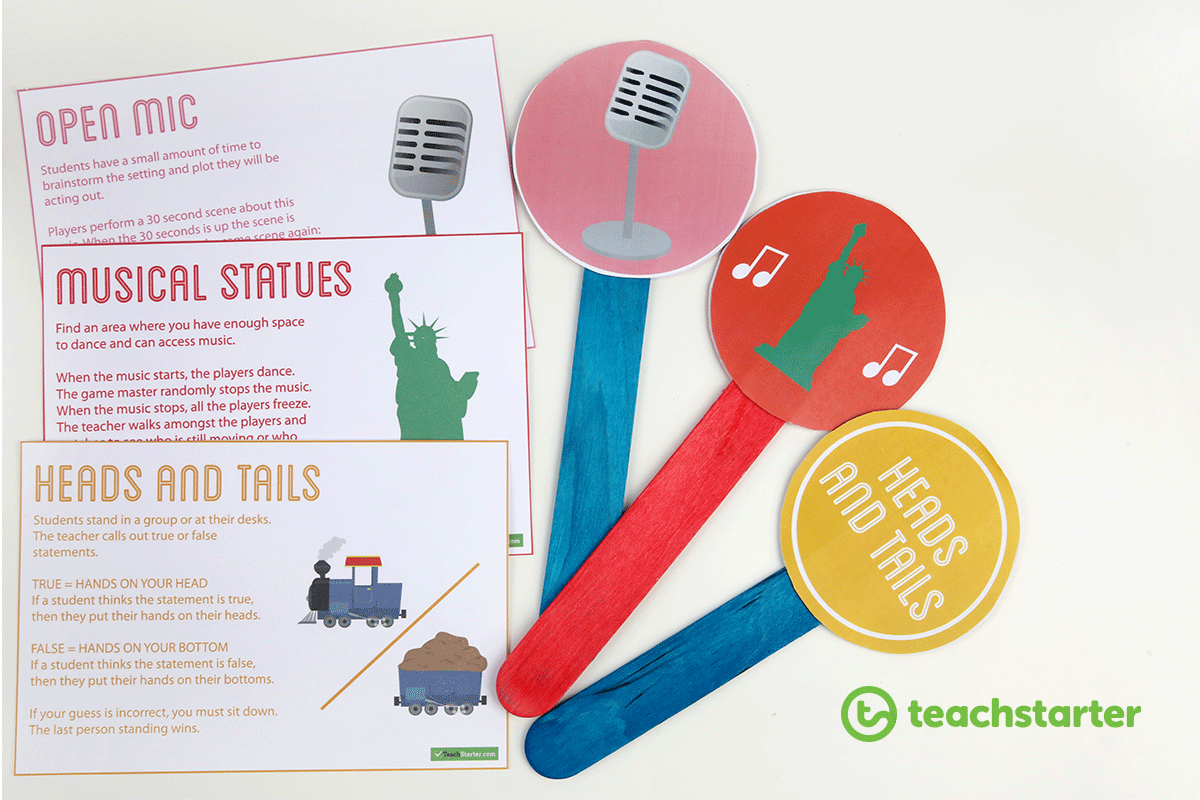
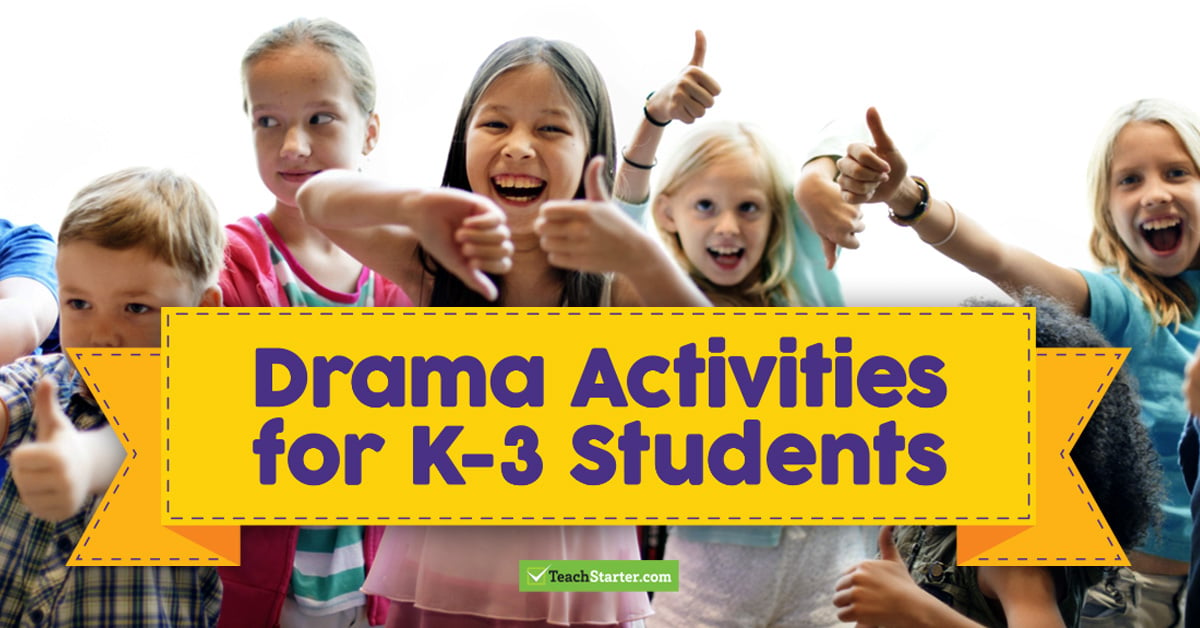
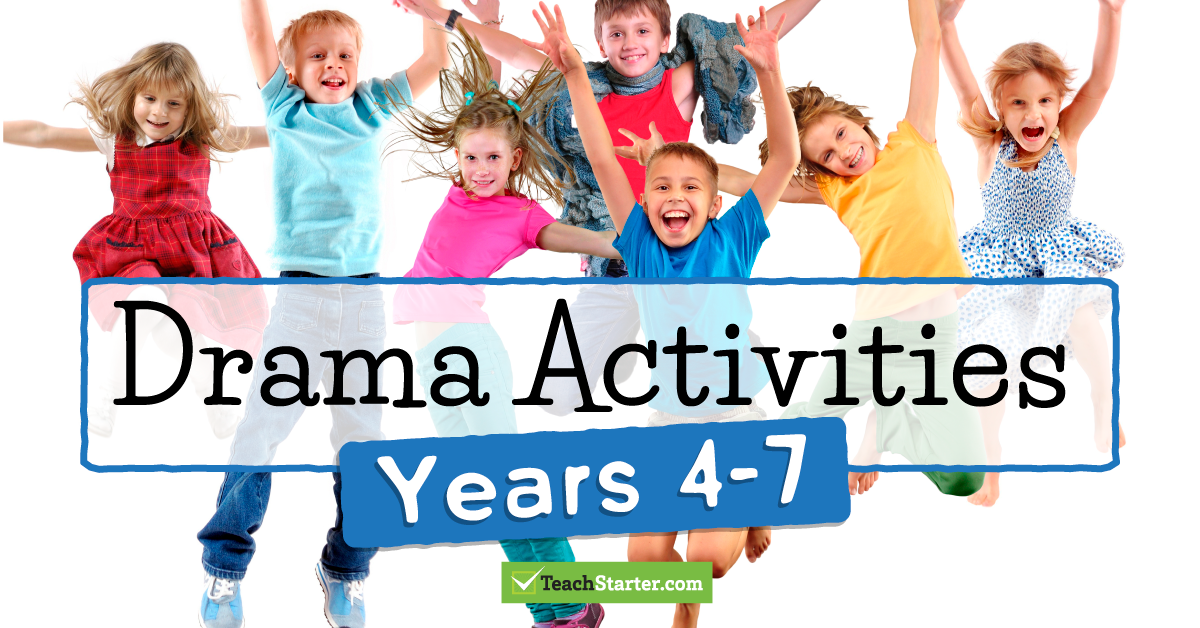






Comments